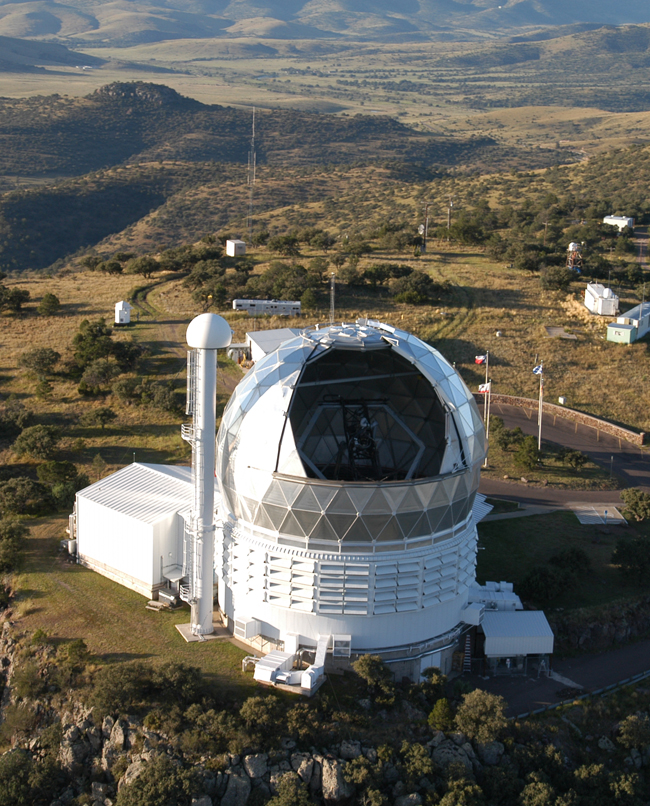McDonald Observatory is located in the Davis Mountains of West Texas, 450 miles west of its research and administrative home at The University of Texas at Austin, under some of the darkest skies in the continental United States.
The observatory offers a wide range of state-of-the-art instrumentation for imaging and spectroscopy in the optical and infrared, available to the research community. These are on:
- the 0.8 m Telescope,
- the 2.1 m Otto Struve Telescope,
- the 2.7 m Harlan J. Smith Telescope, and
- the 10 m Hobby-Eberly Telescope.
Also hosted at the observatory, are:
- a 1 m node of the globally networked Las Cumbres Observatory Global Telescope (LCOGT)
- one of two robotically controlled 1.2 m MOnitoring NEtwork of Telescopes (MONET)
- a 0.51 m telescope dedicated to optical aeronomy, and
- one of four globallly networked Robotic Optical Transient Search Experiment (ROTSE) telescopes.
For four decades, the observatory operated among the first and most productive lunar ranging stations, which set the foundation for a new era of geodetic science on-site through the McDonald Geodetic Observatory.
The McDonald Observatory and The University of Texas at Austin are involved with building what will be the world's largest telescope, the Giant Magellan Telescope.
McDonald Observatory welcomes the public at the Frank N. Bash Visitors Center. Approximately 60,000 visitors per year attend star parties and exhibits, and continuing education programs for teachers. Weather permitting, guided star parties are held weekly in the Rebecca Gale Telescope Park, which now features, among a wide variety of 8-24 in telescopes, the Wren-Marcario Accessible Telescope (WMAT) with wheelchair access, available to all guests. Visit mcdonaldobservatory.org to learn more.









